Themed collection Photofunctional Materials and Transformations

Introduction to photofunctional materials and transformations
Guest Editor Li-Zhu Wu introduces this cross-journal themed collection on photofunctional materials and transformations.

J. Mater. Chem. A, 2023,11, 13063-13064
https://doi.org/10.1039/D3TA90094K
Recent advances on covalent organic frameworks (COFs) as photocatalysts: different strategies for enhancing hydrogen generation
COF-based materials with different linkages and strategies for photocatalytic hydrogen evolution.

Chem. Commun., 2023,59, 7302-7320
https://doi.org/10.1039/D3CC01970E
Recent progress in metal complexes functionalized nanomaterials for photodynamic therapy
The recent developments and applications of metal complexes functionalized nanomaterials for photodynamic cancer therapy are reviewed.

Chem. Commun., 2023,59, 6956-6968
https://doi.org/10.1039/D3CC01355C
Construction of gel networks via [2+2] photocycloaddition
Cross-linking of olefin moieties in branched polymers could furnish gel networks via [2+2] photocycloadditions. And the obtained networks are reversible and self-healing, which show promising applications in biology and biomedical science.
![Graphical abstract: Construction of gel networks via [2+2] photocycloaddition](/en/Image/Get?imageInfo.ImageType=GA&imageInfo.ImageIdentifier.ManuscriptID=D2TC05270A&imageInfo.ImageIdentifier.Year=2023)
J. Mater. Chem. C, 2023,11, 2826-2830
https://doi.org/10.1039/D2TC05270A
In situ post-synthesis of luminescent Lewis acid–base adducts
In situ post-synthesis of luminescent Lewis acid–base adducts via inkjet printing is elaborately featured. The applications of this technology were exemplified and compared.
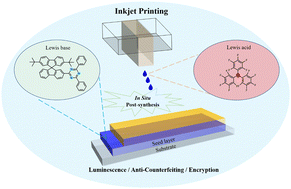
Chem. Commun., 2023,59, 5030-5038
https://doi.org/10.1039/D2CC06749H
Fluorophore-based host–guest assembly complexes for imaging and therapy
Supramolecular chemistry with its unique properties has received considerable attention in many fields. This paper summarizes recent advances in the supramolecular fluorescence systems based on host–guest interactions and their bio-applications.
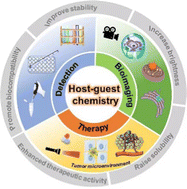
Chem. Commun., 2023,59, 3024-3039
https://doi.org/10.1039/D2CC06286K
Visible-light-induced protein labeling in live cells with aryl azides
This feature article reviews the recent progress of protein labeling in live cells with aryl azides induced by visible-light irradiation.
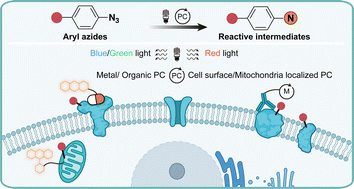
Chem. Commun., 2023,59, 2413-2420
https://doi.org/10.1039/D2CC06987C
Advances in electrically driven light-emitting diodes based on lead-free metal halides
More and more luminescent lead-free metal halides containing Cu(I), Mn(II), Sb(III), Sn(II) and rare-earth halides are developed toward highly efficient electrically-driven light emitting diodes.

Chem. Commun., 2023,59, 1116-1124
https://doi.org/10.1039/D2CC06680G
Multi-functional photocatalytic systems for solar fuel production
This review focuses on multi-functional photocatalytic systems for solar fuel production by combining photocatalytic water oxidation and proton or CO2 reduction to pave a new way to produce solar fuels more effectively than natural photosynthesis.
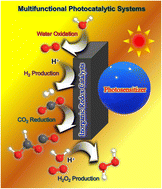
J. Mater. Chem. A, 2023,11, 14614-14629
https://doi.org/10.1039/D3TA02356G
Mechanistic insights into the influence of surface ligands on quantum dots for photocatalysis
Quantum dots are promising semiconductor nanocrystals in the field of photocatalysis, and their surface ligands play an important role on the overall photocatalytic performance in many aspects.
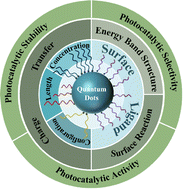
J. Mater. Chem. A, 2023,11, 8497-8514
https://doi.org/10.1039/D2TA09293J
Intramolecular singlet fission and triplet exciton harvesting in tetracene oligomers for solar energy conversion
Singlet fission (SF), which can convert one singlet exciton into two triplet excitons, has the potential to enhance the solar energy conversion efficiency in devices such as photovoltaic cells and processes such as photocatalysis.

J. Mater. Chem. A, 2023,11, 8515-8539
https://doi.org/10.1039/D3TA00193H
Carbon-rich macrocycles and carbon nanoribbons as unique optical materials
Carbon-rich macrocycles and carbon nanoribbons act as unusual optical materials in the free form or when combined with other guests.
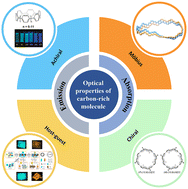
J. Mater. Chem. C, 2023,11, 4267-4287
https://doi.org/10.1039/D2TC05492B
Impacts of host–guest assembly on the photophysical and photocatalytic properties of heterogenized molecular photosensitizer and catalysts
This review highlights the integration of molecular guests with MOF architectures, enabling enzyme-like efficacy to isolate or preorganize photo-active and redox-active sites and manipulate the photophysical and photocatalytic properties.

J. Mater. Chem. A, 2023,11, 6646-6658
https://doi.org/10.1039/D2TA09715J
CZTSSe solar cells: insights into interface engineering
Cu2ZnSn(S,Se)4 (CZTSSe) photovoltaic (PV) technology has attracted much attention due to its cost efficiency, non-toxic nature, and use of earth-abundant elements.

J. Mater. Chem. A, 2023,11, 4836-4849
https://doi.org/10.1039/D2TA09561K
Aggregation-induced emission materials: a platform for diverse energy transformation and applications
Motivated by the advantages of AIEgens in diversifying energy species and modulating energy transformation, the application of AIEgens based on the energy conversion of solar, chemical, mechanical, and electrical energies are summarized.

J. Mater. Chem. A, 2023,11, 4850-4875
https://doi.org/10.1039/D2TA09630G
Recent advances in metal-free phosphorescent materials for organic light-emitting diodes
This review discusses organic room temperature phosphorescent materials for the emitting layer of OLEDs. The existing circumstances, potential and challenges of metal-free phosphorescent OLEDs are summarized.
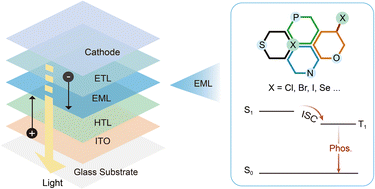
J. Mater. Chem. C, 2023,11, 3143-3161
https://doi.org/10.1039/D2TC05256C
Photocatalytic hydrogen production: an overview of new advances in structural tuning strategies
Newly emerged structural tuning strategies, i.e., singe atom photocatalysts, defect control and S-scheme heterojunctions, display significant advancements for high performance photocatalytic hydrogen production toward the industrialization target.

J. Mater. Chem. A, 2023,11, 4473-4486
https://doi.org/10.1039/D2TA09614E
Advanced oxygen evolution reaction catalysts for solar-driven photoelectrochemical water splitting
Herein, we summarize the recent developments in structure optimizations of oxygen evolution reaction catalysts for promoting photoelectrochemical water splitting performances.

J. Mater. Chem. A, 2023,11, 3888-3903
https://doi.org/10.1039/D2TA09479G
Semiconductor quantum dots: a versatile platform for photoredox organic transformation
A summary of the research progress of diverse organic transformations over semiconductor quantum dot based photofunctional catalysts is provided.

J. Mater. Chem. A, 2023,11, 3262-3280
https://doi.org/10.1039/D2TA09423A
Photoelectrocatalytic organic synthesis: a versatile method for the green production of building-block chemicals
The rising energy crisis and environmental problems are urging the development of more sustainable organic synthetic methods.
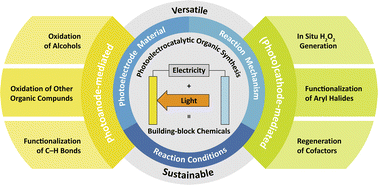
J. Mater. Chem. A, 2023,11, 3281-3296
https://doi.org/10.1039/D2TA09430D
Recent advances in metal-free covalent organic frameworks for photocatalytic applications in energy and environmental fields
A review on metal-free COF photocatalysts from an environmental perspective is presented.

J. Mater. Chem. A, 2023,11, 3245-3261
https://doi.org/10.1039/D2TA09582C
Semi-quantitative determination of active sites in heterogeneous catalysts for photo/electrocatalysis
This review focuses on exploring the defect active sites by determining the location and type and semi-quantitative calculation of defect concentrations by a variety of representational methods.

J. Mater. Chem. A, 2023,11, 2528-2543
https://doi.org/10.1039/D2TA09033C
State of the art in the photochemical degradation of (micro)plastics: from fundamental principles to catalysts and applications
Plastics and microplastics are major environmental pollutants due to wide applications and difficult degradations. Herein, we summarize several studies on degradations of (micro)plastics to value-added products and intermediates via photocatalysis.

J. Mater. Chem. A, 2023,11, 2503-2527
https://doi.org/10.1039/D2TA09523H
Non-aryl substituted aza-BODIPYs at 1,7- or 3,5-sites: synthesis, structures, optical properties, and applications
Aza-borondipyrromethenes (aza-BODIPYs) possess excellent photophysical properties, and the structurally modified dyes exhibit favourable performance and applications in biomolecular sensing, photoelectric materials, and tumor phototherapy.
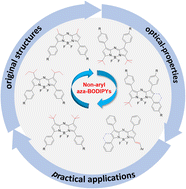
J. Mater. Chem. C, 2023,11, 1668-1677
https://doi.org/10.1039/D2TC05048J
Piperazine: a promising building block for aggregation-induced emission materials
We report piperazine as a promising building block for the construction of aggregation-induced emission (AIE) materials by using its electron-donating ability and chair conformation.

J. Mater. Chem. C, 2023,11, 12894-12899
https://doi.org/10.1039/D3TC02573J
CO2-responsive tunable persistent luminescence in a hydrogen-bond organized two-component ionic crystal
A hydrogen-bond organized ionic crystal exhibits CO2-responsive tunable afterglow.

Chem. Commun., 2023,59, 10113-10116
https://doi.org/10.1039/D3CC03265E
Bifunctional chimera for ligand-directed photo-degradation of oncogenic microRNA
Targeted inhibition of oncogenic microRNAs provides a promising anti-cancer approach.

Chem. Commun., 2023,59, 7639-7642
https://doi.org/10.1039/D2CC06687D
Photoisomerization-controlled wavelength-tunable plasmonic lasers
The change of refractive index resulting from the isomerization of photochromic molecules under light irradiation reconfigures lattice plasmon resonances, which allows for the realization of dynamically and continuously tunable plasmonic lasers.

Chem. Commun., 2023,59, 7631-7634
https://doi.org/10.1039/D3CC01505J
Water-soluble polymer brush-substituted squaraine NIR-II dye for efficient photothermal therapy
Water-soluble squaric acid nanoparticles (SQ-POEGMA) with low toxicity and excellent photothermal effect in living organisms by attaching a water-soluble oligomer (POEGMA) to the small molecule squaric acid through a click chemistry reaction.

J. Mater. Chem. B, 2023,11, 4389-4395
https://doi.org/10.1039/D3TB00510K
Asymmetric diarylamine guests for a host–guest system with stimulus-responsive room temperature phosphorescence
The Förster resonance energy transfer (FRET) process has been utilized to construct host–guest systems with stimuli-responsive room-temperature phosphorescence (RTP).

J. Mater. Chem. C, 2023,11, 6290-6295
https://doi.org/10.1039/D3TC00356F
Single-dye NIR-II chemiluminescence system for H2O2 imaging
We present the first efficient single-dye NIR-II chemiluminescence system with the longest emission maximum around 1000 nm, for which a novel electron transfer mechanism was proposed rather than the generally considered LUMODOD–HOMODye model.

Chem. Commun., 2023,59, 6171-6174
https://doi.org/10.1039/D2CC06592D
Tetralactam macrocycle based indicator displacement assay for colorimetric and fluorometric dual-mode detection of urinary uric acid
An indicator displacement assay for colorimetric/fluorometric dual-mode detection of urinary uric acid was constructed using a naphthalene-based tetralactam macrocycle and phenoxazine dye, resorufin, which realized the visual detection of uric acid levels of volunteers.
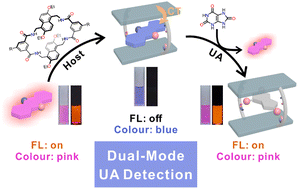
Chem. Commun., 2023,59, 5411-5414
https://doi.org/10.1039/D2CC06622J
Peptide photowrapping of gold-silica nanocomposites for constructing MMP-responsive drug capsules for chemo-photothermal therapy
Gold-silica drug nanocapsules were fabricated via peptide photowrapping, which respond to an MMP-upregulated tumor microenvironment and achieve chemo-photothermal combination therapy.

Chem. Commun., 2023,59, 5059-5062
https://doi.org/10.1039/D2CC06696C
Enantioselective cyanation of propargylic C–H bonds via cooperative photoredox and copper catalysis
An asymmetric cyanation of propargylic C–H bonds via a copper-catalyzed radical relay has been developed, in which the propargylic radical was formed via a photoredox-catalyzed intramolecular 1,5-HAT process.

Chem. Commun., 2023,59, 4656-4659
https://doi.org/10.1039/D3CC00410D
Tuning white light emission and band gap in the one-dimensional metal halide (C6H13N4)3Pb2Br7 by pressure engineering
Pressure-induced white light emission enhancement and bandgap narrowing were achieved in the one-dimensional metal halide (C6H13N4)3Pb2Br7.

J. Mater. Chem. C, 2023,11, 5018-5023
https://doi.org/10.1039/D3TC00523B
Radical-mediated remote migration of quinoxalinones
Described herein is the first example of radical-mediated remote quinoxalinone migration.

Chem. Commun., 2023,59, 4499-4502
https://doi.org/10.1039/D2CC06887G
Liquid and solid-state tunable fluorescent carbon dots for trace water detection
A type of carbon dot that possesses tunable fluorescence properties both in liquid and solid states was synthesized and applied to trace water detection.

Chem. Commun., 2023,59, 4475-4478
https://doi.org/10.1039/D2CC06736F
Single nanowire-based fluorescence lifetime thermometer for simultaneous measurement of intra- and extra-cellular temperatures
A silicon nanowire-based fluorescence lifetime thermometer (NWFLT) was fabricated for the simultaneous measurement of intra- and extra-cellular temperatures.
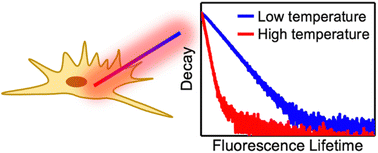
Chem. Commun., 2023,59, 4483-4486
https://doi.org/10.1039/D2CC06597E
Aggregated coordination polymers of Ag+ with a cysteine derivative ligand containing an AIEgen
The novel spectral changes from the coordination polymers of Ag+ with a chiral cysteine-based ligand containing a TPE AIEgen.

Chem. Commun., 2023,59, 4320-4323
https://doi.org/10.1039/D3CC00474K
Lipid droplet targeting-guided hypoxic photodynamic therapy with curcumin analogs
Two LD-targeting photosensitizers (CCOH and CCN) were designed and synthesized by introducing coumarin into the curcumin structure, which could generate reactive oxygen species in type I and II synergy upon light irradiation.
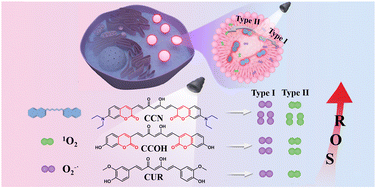
Chem. Commun., 2023,59, 4181-4184
https://doi.org/10.1039/D2CC07025A
Enhanced hydrogen evolution activity of CsPbBr3 nanocrystals achieved by dimensionality change
In terms of facilitated photogenerated charge carrier dynamics and induced proton reduction potential, photocatalytic H2 evolution could be improved by dimensionality tuning from 3D nanocubes to 1D nanorods.
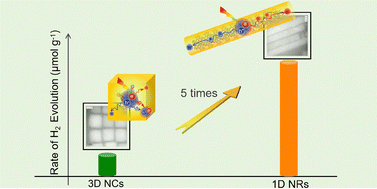
Chem. Commun., 2023,59, 4189-4192
https://doi.org/10.1039/D2CC06731E
Selective oxidation of benzylic alcohols via synergistic bisphosphonium and cobalt catalysis
A synergistic photocatalytic system using a bisphosphonium catalyst and a cobalt catalyst has been developed, enabling the selective oxidation of benzylic alcohols under oxidant-free and environmentally benign conditions.
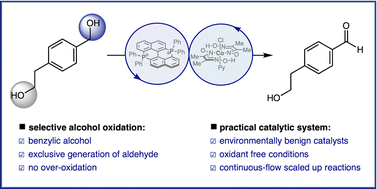
Chem. Commun., 2023,59, 4055-4058
https://doi.org/10.1039/D3CC00532A
A hypoxia-activated photothermal agent inhibits multiple heat shock proteins for low-temperature photothermal therapy
A hypoxia-activated photothermal agent to suppress the expression of multiple heat shock proteins was synthesized for low-temperature photothermal therapy.

Chem. Commun., 2023,59, 3898-3901
https://doi.org/10.1039/D2CC06598C
Photo/Ni dual-catalyzed radical defluorinative sulfonylation to synthesize gem-difluoro allylsulfones
Radical defluorinative functionalization of α-trifluoromethyl styrenes represents an effective way toward gem-difluoroalkenes.

Chem. Commun., 2023,59, 3707-3710
https://doi.org/10.1039/D2CC05934G
Solution-processed single-emissive-layer WOLEDs with high efficiency and ultra-high color rendering index beyond 90
We devised single-EML SP-WOLEDs with luminescent gold(III) emitters featuring high EQEmax of 12.72%, CIE coordinates of (0.40, 0.40), and CRI of 93, which is among the best values for the single-EML SP-WOLEDs with CRI > 90 reported in the literature.
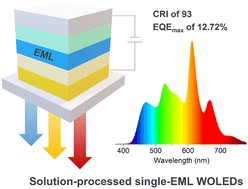
J. Mater. Chem. C, 2023,11, 3936-3943
https://doi.org/10.1039/D2TC05257A
Triphenylphosphine oxide promoting visible-light-driven C–C coupling via desulfurization
Triphenylphosphine oxide (TPPO) and triphenylphosphine (TPP) can form a complex in solution, promoting visible light absorption to trigger electron transfer within the complex and generate radicals suitable to drive the desulfurization of mercaptans.
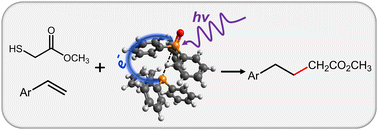
Chem. Commun., 2023,59, 3546-3549
https://doi.org/10.1039/D3CC00001J
Axisymmetric bis-tridentate Ir(III) photoredox catalysts for anticancer phototherapy under hypoxia
Axisymmetric bis-tridentate Ir(III) complex with strong synergetic type I/II photosensitization and photocatalytic were constructed for anticancer phototherapy under hypoxia and normoxia.
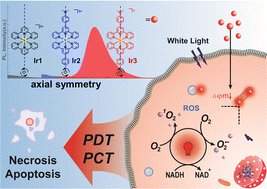
Chem. Commun., 2023,59, 3083-3086
https://doi.org/10.1039/D2CC06721H
Macrocyclization-induced phosphorescence enhancement of pyridinium-based macrocycles
A macrocyclization-induced phosphorescence enhancement (MIPE) strategy involving macrocyclization of phosphorescent pyridine/pyridinium units by methylene linkers is reported and proved to have good effectiveness and universality.
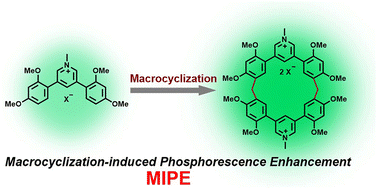
J. Mater. Chem. A, 2023,11, 4957-4962
https://doi.org/10.1039/D2TA09993D
Visible-light-induced dehydrogenative amidation of aldehydes enabled by iron salts
A dehydrogenative amidation reaction of aldehydes and amines via an iron-mediated photoinduced ligand-to-metal charge transfer (LMCT) process is herein reported.

Chem. Commun., 2023,59, 2771-2774
https://doi.org/10.1039/D2CC06507J
NIR luminogen for low-temperature photothermal therapy by triggering HSP90α down-regulation
The constructed NIR luminogen efficiently triggered the down-regulation of the HSP90α protein through photo-thermal conversion based on a gene interference strategy both in vitro and in vivo.

Chem. Commun., 2023,59, 2743-2746
https://doi.org/10.1039/D2CC06932F
Distorted B/O-containing nanographenes with tunable optical properties
The fusion of multiple B/O-heterocycles onto hexa-peri-hexabenzocoronene has led to the generation of two B/O-containing nanographenes that exhibit distorted geometries, red-shifted absorptions and fluorescence.

Chem. Commun., 2023,59, 2644-2647
https://doi.org/10.1039/D2CC06376J
Photoswitchable semiconducting polymer dots for pattern encoding and superresolution imaging
Two photoswitchable polymers are synthesized by incorporating photochromic dithienylethene into main chains, pattern encoding and STORM imaging were realized.
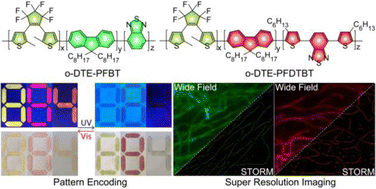
Chem. Commun., 2023,59, 2469-2472
https://doi.org/10.1039/D2CC06707B
Synthesis of triarylborane-centered N-heterocyclic carbene cages with tunable photophysical properties
A discrete hexacarbene cage [Au3(1)2](PF6)3 containing Lewis acidic triarylborane-bridged NHC ligands was synthesized, which shows reversible binding of fluorides.
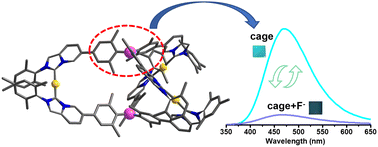
Chem. Commun., 2023,59, 2291-2294
https://doi.org/10.1039/D2CC06584C
Enhancing the durability of Au clusters in CO2 photoreduction via encapsulation in Cu-based metal–organic frameworks
The encapsulation of Au25 nanoclusters in Cu3(BTC)2 metal–organic frameworks can achieve CO2 photoreduction for selective CO production in a gas–solid reaction system with remarkably enhanced durability.

Chem. Commun., 2023,59, 2299-2302
https://doi.org/10.1039/D2CC06719F
Anion vacancy correlated photocatalytic CO2 to CO conversion over quantum-confined CdS nanorods under visible light
In terms of electronic structure change, surface anion vacancies in II–VI semiconductors could promote CO generation rates, which have been confirmed as active sites for photocatalytic CO2 reduction.
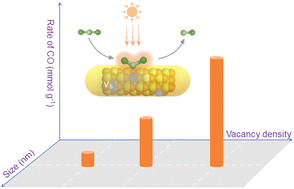
J. Mater. Chem. A, 2023,11, 3937-3941
https://doi.org/10.1039/D2TA09451G
Building a cobaloxime-based metal–organic framework for photocatalytic aerobic oxidation of arylboronic acids to phenols
An unprecedented cobaloxime-based zirconium metal–organic framework (Zr-TCPCo) is designed and synthesized, which exhibits excellent catalytic activity for aerobic oxidation of arylboronic acids to phenols as a photocatalyst.

Chem. Commun., 2023,59, 2239-2242
https://doi.org/10.1039/D2CC06945H
Indole-fused BN-heteroarenes as narrowband blue emitters for organic light-emitting diodes
Multi-resonance thermally activated delayed fluorescence (MR-TADF) emitters based on a novel indole-fused BN-heteroarene (InBN) are developed via a π-truncation strategy. Narrowband blue-emitting OLEDs are demonstrated with high EQEs of up to 16.8%.
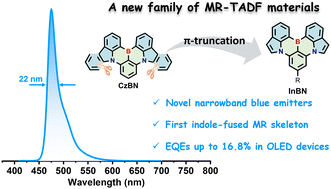
J. Mater. Chem. C, 2023,11, 2469-2474
https://doi.org/10.1039/D2TC04952J
Photocatalytic reductive C–O bond scission promoted by low-work-function Cd single atoms and clusters
Photocatalytic C–H bond scission over ZnS is promoted by metallic Cd, allowing for the reductive scission of the weakened C–O bond near the C–H bond.

Chem. Commun., 2023,59, 2102-2105
https://doi.org/10.1039/D2CC06649A
Visible-light promoted intramolecular carboamination of alkynes for the synthesis of oxazolidinone-fused isoquinolinones
The synthesis of oxazolidinone-fused isoquinolinones has been developed through visible-light promoted intramolecular carboamination of alkynes and benzamides under mild conditions.

Chem. Commun., 2023,59, 1979-1982
https://doi.org/10.1039/D2CC06542H
Combining dithieno[3,2-f:2′,3′-h]quinoxaline-based terpolymer and ternary strategies enabling high-efficiency organic solar cells
This study demonstrates high-efficiency OSCs by combining dithieno[3,2-f:2′,3′-h]quinoxaline-based terpolymer and ternary strategies.
![Graphical abstract: Combining dithieno[3,2-f:2′,3′-h]quinoxaline-based terpolymer and ternary strategies enabling high-efficiency organic solar cells](/en/Image/Get?imageInfo.ImageType=GA&imageInfo.ImageIdentifier.ManuscriptID=D2CC06725K&imageInfo.ImageIdentifier.Year=2023)
Chem. Commun., 2023,59, 1991-1994
https://doi.org/10.1039/D2CC06725K
Circularly polarized near-infrared phosphorescence of chiral chromium(III) complexes
Near-infrared 850 nm Cr(III) emissions with handedness in degassed solutions were induced by ligand carbon-centred chirality.

Chem. Commun., 2023,59, 1781-1784
https://doi.org/10.1039/D2CC06548G
Lignin C–C bond cleavage induced by consecutive two-photon excitation of a metal-free photocatalyst
A commercially-available metal-free photocatalyst induces lignin C–C bond cleavage through consecutive two-photon excitation in additive-free ambient air conditions.

Chem. Commun., 2023,59, 1777-1780
https://doi.org/10.1039/D2CC06730G
A novel strategy of constructing an artificial light-harvesting system based on a supramolecular organic framework for photocatalysis
A supramolecular organic framework was fabricated through encapsulation-enhanced donor–acceptor interaction for the construction of artificial light-harvesting systems for photocatalysis.

J. Mater. Chem. A, 2023,11, 2627-2633
https://doi.org/10.1039/D2TA09227A
Minisci reaction of heteroarenes and unactivated C(sp3)–H alkanes via a photogenerated chlorine radical
Minisci reaction of heteroarenes and unactivated C(sp3)–H alkanes via a photogenerated chlorine radical from FeCl3 and seawater.

Chem. Commun., 2023,59, 1637-1640
https://doi.org/10.1039/D2CC06486C
Benzophenone-containing phosphors with an unprecedented long lifetime of 1.8 s under ambient conditions
Unlike benzophenone's phosphorescence lifetime of around 1 ms at 77 K, here the benzophenone-containing phosphor exhibits an ambient lifetime of 1.8 s.

Chem. Commun., 2023,59, 1525-1528
https://doi.org/10.1039/D2CC06601G
Binaphthol-based chiral host molecules for efficient solution-processed circularly polarized OLEDs
Two chiral hosts, named (R/S)-BN-mCP and (R/S)-BN-2mCP, are prepared. The solution processable CP-OLED based on chiral host and achiral phosphorescent emitter presents the best performance with an EQEmax of 17.1% and the gEL of﹣1.3 × 10−3.

Chem. Commun., 2023,59, 1473-1476
https://doi.org/10.1039/D2CC06420K
A high-contrast polymorphic difluoroboron luminogen with efficient RTP and TADF emissions
Three polymorphs of a N,S-chelated four-coordinated difluoroboron-based emitter display high contrast green (G), yellow (Y) and red (R) emissions with TADF character for the G- and R-Crystals, and RTP for the Y-Crystal, tuned by different molecular conformations and packings.
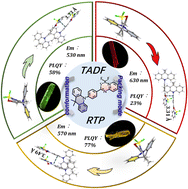
Chem. Commun., 2023,59, 1377-1380
https://doi.org/10.1039/D2CC05849A
Enantioselective reductive allylic alkylation enabled by dual photoredox/palladium catalysis
A dual photoredox/palladium catalyzed regio- and enantioselective reductive cross-coupling of allylic acetates with alkyl bromides has been achieved.
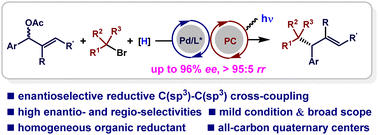
Chem. Commun., 2023,59, 1153-1156
https://doi.org/10.1039/D2CC06705F
Dual supramolecular chirogenesis based on platinum(II) metallotweezers
Optically active platinum(II) metallotweezers demonstrate both self-complexation and host–guest complexation capabilities, leading to two distinct supramolecular chirogenic signals in the visible region.

Chem. Commun., 2023,59, 744-747
https://doi.org/10.1039/D2CC05787E
Cascade energy transfer augmented circular polarization in photofluorochromic cholesteric texture
In a dynamically changing chiral environment, chirality and excited energy transfer are described in a self-organized cholesteric texture. The cascade energy transfer process appears to turn “on” and “off” in response to external light stimuli.

Chem. Commun., 2023,59, 567-570
https://doi.org/10.1039/D2CC06317D
About this collection
Photofunctional materials and transformations are lively fields dedicated to the utilization and transduction of photons for fundamental understanding and diverse applications. It arouses interdisciplinary interests in physics, chemistry, material science, biology, photonics and engineering, which stimulates breakthroughs in photovoltaics, photolithography, photoelectronics, photocatalysis, photobiology and phototherapy. The charm of photofunctional materials and transformations attracts a growing number of researchers that push forward this field with inspiration and endeavor.
This cross-journal themed collection, guest edited by Li-Zhu Wu (Technical Institute of Physics and Chemistry, CAS, China), aims to present the landscape of photochemistry in diverse and burgeoning branches.